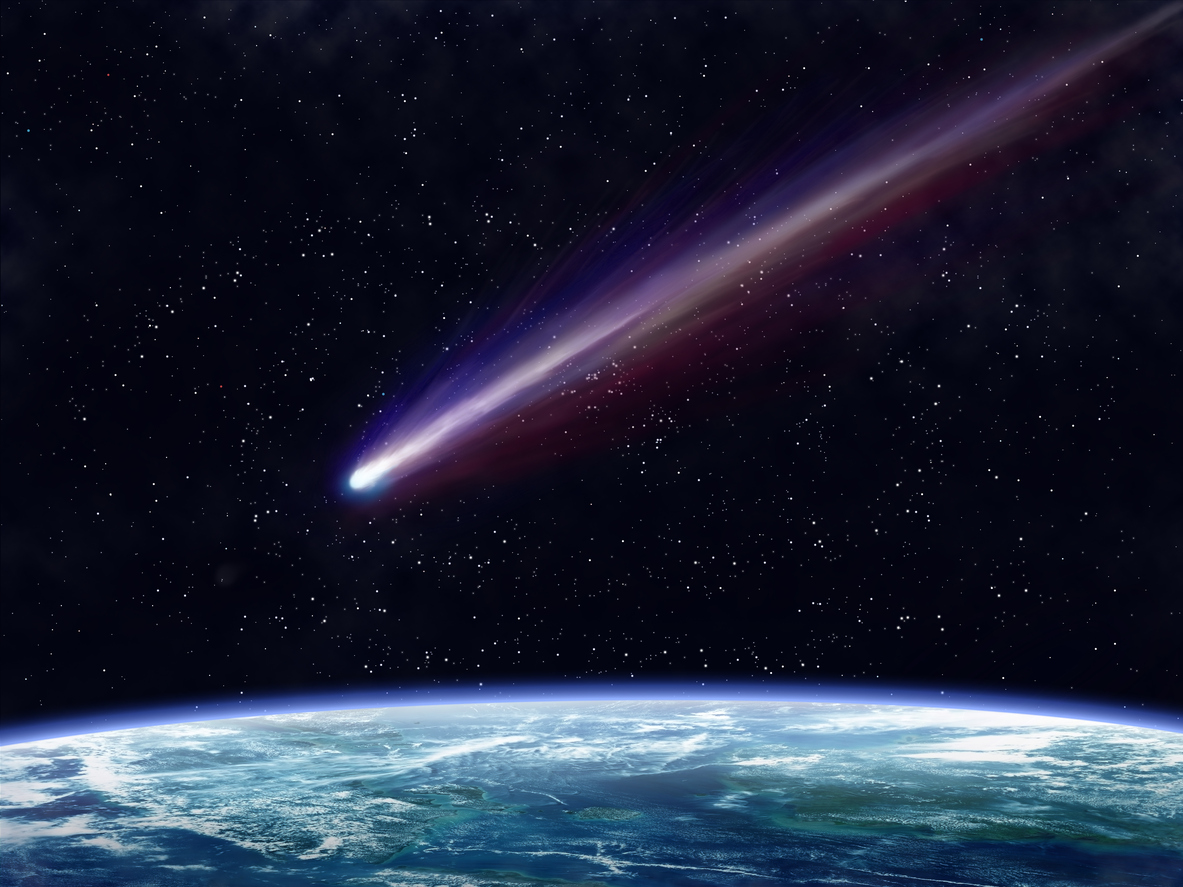Ancient Turkish carvings describe comet strike that led to the rise of modern civilization


Researchers studying ancient Turkish pillars at the Göbekli Tepe archaeological site have discovered that certain mysterious markings describe a massive comet strike that might have changed the course of human history, The Telegraph reports.
University of Edinburgh researchers found that symbols on the so-called "vulture stone," which dates from 9000 B.C., are linked to the arrangement of constellations. Other markings symbolize a group of comets hitting Earth, and an illustration of a headless man likely symbolizes the widespread loss of life. "Using a computer program to show where the constellations would have appeared above Turkey thousands of years ago, [the experts] were able to pinpoint the comet strike to 10,950 B.C.," The Telegraph reports — the same time as the beginning of the "Younger Dryas" period, when global temperatures plummeted.
Prior to understanding of the vulture stone, many researchers already hypothesized that the Younger Dryas began due to a comet strike, which kicked up debris into the atmosphere and caused the planet to cool. However, there is still no known comet impact site. "I think this research, along with the recent finding of a widespread platinum anomaly across the North American continent, virtually seal the case in favor of [a Younger Dryas comet impact]," said the University of Edinburgh's Dr. Martin Sweatman.
The Week
Escape your echo chamber. Get the facts behind the news, plus analysis from multiple perspectives.

Sign up for The Week's Free Newsletters
From our morning news briefing to a weekly Good News Newsletter, get the best of The Week delivered directly to your inbox.
From our morning news briefing to a weekly Good News Newsletter, get the best of The Week delivered directly to your inbox.
The cooling of the planet prompted mankind to begin to farm and build permanent settlements, marking the rise of Neolithic civilizations. Prior to the Younger Dryas period, people were primarily nomadic hunters who did not need to collaborate extensively in order to survive.
"It appears Göbekli Tepe was, among other things, an observatory for monitoring the night sky," Sweatman told The Telegraph. "One of its pillars seems to have served as a memorial to this devastating event — probably the worst day in history since the end of the ice age.”
A free daily email with the biggest news stories of the day – and the best features from TheWeek.com
Jeva Lange was the executive editor at TheWeek.com. She formerly served as The Week's deputy editor and culture critic. She is also a contributor to Screen Slate, and her writing has appeared in The New York Daily News, The Awl, Vice, and Gothamist, among other publications. Jeva lives in New York City. Follow her on Twitter.
-
 A long weekend in Fontainebleau
A long weekend in FontainebleauThe Week Recommends Less than an hour from Paris, this historic town is perfect for a short break
-
 Political cartoons for December 16
Political cartoons for December 16Cartoons Tuesday’s editorial cartoons include calibrating fonts, Christmas classics, and more
-
 Cryptocurrency and the future of politics
Cryptocurrency and the future of politicsIn The Spotlight From electoral campaigns to government investments, crypto is everywhere and looks like it’s here to stay
-
 Nobody seems surprised Wagner's Prigozhin died under suspicious circumstances
Nobody seems surprised Wagner's Prigozhin died under suspicious circumstancesSpeed Read
-
 Western mountain climbers allegedly left Pakistani porter to die on K2
Western mountain climbers allegedly left Pakistani porter to die on K2Speed Read
-
 'Circular saw blades' divide controversial Rio Grande buoys installed by Texas governor
'Circular saw blades' divide controversial Rio Grande buoys installed by Texas governorSpeed Read
-
 Los Angeles city workers stage 1-day walkout over labor conditions
Los Angeles city workers stage 1-day walkout over labor conditionsSpeed Read
-
 Mega Millions jackpot climbs to an estimated $1.55 billion
Mega Millions jackpot climbs to an estimated $1.55 billionSpeed Read
-
 Bangladesh dealing with worst dengue fever outbreak on record
Bangladesh dealing with worst dengue fever outbreak on recordSpeed Read
-
 Glacial outburst flooding in Juneau destroys homes
Glacial outburst flooding in Juneau destroys homesSpeed Read
-
 Scotland seeking 'monster hunters' to search for fabled Loch Ness creature
Scotland seeking 'monster hunters' to search for fabled Loch Ness creatureSpeed Read
